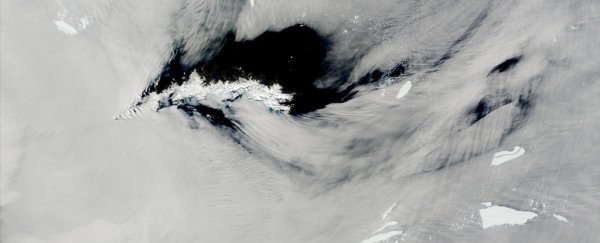An enormous Antarctic iceberg whose journeys were probably the most well-documented in history has now melted away to nothing in the Atlantic ocean.
A68 cracked off the Larsen C ice sheet on the Antarctic Peninsula in 2017 as one of the biggest icebergs ever. At the time, it measured 2,240 square miles (5,800 square kilometers), about the size of the state of Delaware.
In the time since, the berg has been buffeted about the South Atlantic, curving up toward South Georgia Island. There, warm temperatures and waves broke it into large chunks. Those chunks have since fragmented into pieces too small to track.
The U.S. National Ice Center tracks icebergs that are at least 10 nautical miles (18.5 kilometers) in length or that have an area of at least 20 square nautical miles (68.5 sq km).
The largest piece of Larsen C no longer qualifies as of April 16, according to the Center's database: It measured only 3 nautical miles by 2 nautical miles (5.5 km by 3.7 km).
A68 was studied and surveilled perhaps more than any iceberg ever before. Thanks to ample satellite imagery, it was obvious when the enormous iceberg first began to crack under the strain of movement (only a week after it broke free from the ice shelf).
Earth scientists could see the rifts in the ice and the temperature differential in the water that surrounded it. They watched it get stuck on a seamount not far from where it calved and then pirouette toward warmer waters in a current called the Weddell Gyre.
In November 2020, it looked as though A68 might crash into the shallows near South Georgia Island, potentially blocking access to the ocean for penguins that roost there. But A68 swung wide and instead gradually got mushy and fractured as waves stressed it and warm water seeped into and widened small cracks, according to the BBC.
"We saw every little twist and turn," Laura Gerrish, a mapping specialist at the British Antarctic Survey, told the BBC.
"We were able to follow its progress with daily satellite images, at a level of detail we've not really been able to do before."
Researchers have also been working to understand how a big calving event like the one that birthed A68 affects the ecosystems around it, although the harsh climate of the Antarctic has made the job difficult. In 2018, a British Antarctic Survey expedition headed to the calving site to collect seafloor samples, but was stymied by heavy sea ice.
A second mission in 2019 was similarly thwarted. A mission to South Georgia Island this February was finally successful. Researchers deployed two marine robots near the island to learn about how the cold, freshwater influx from the melting fragments of A68 affected the local ecosystem.
One of the robots was lost, according to the BBC, but the other will be recovered in May and its data analyzed.
Related Content:
Images of melt: Earth's vanishing ice caps
Photos: Antarctica's Larsen C ice shelf through time
9 real ways the world could end
This article was originally published by Live Science. Read the original article here.
